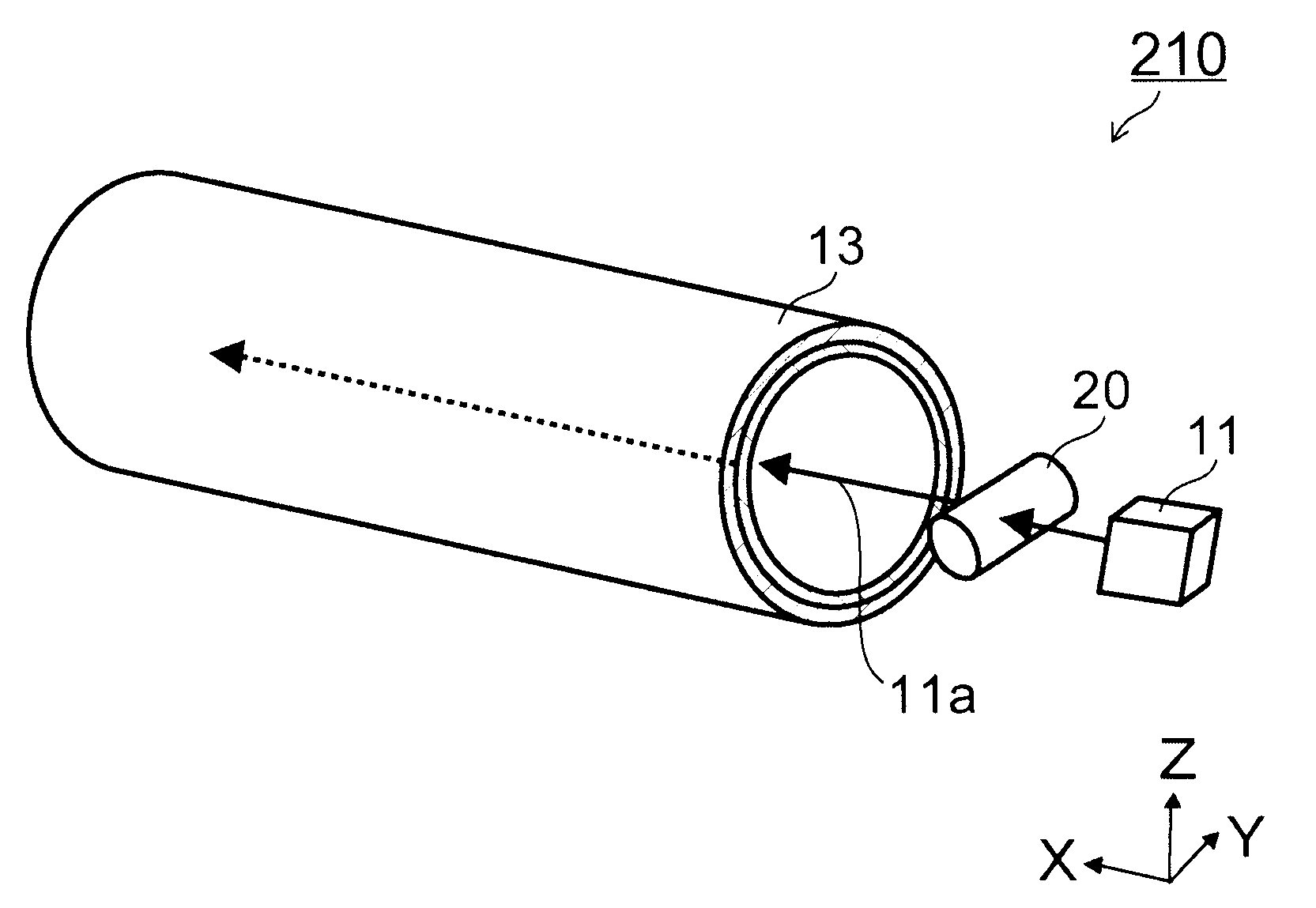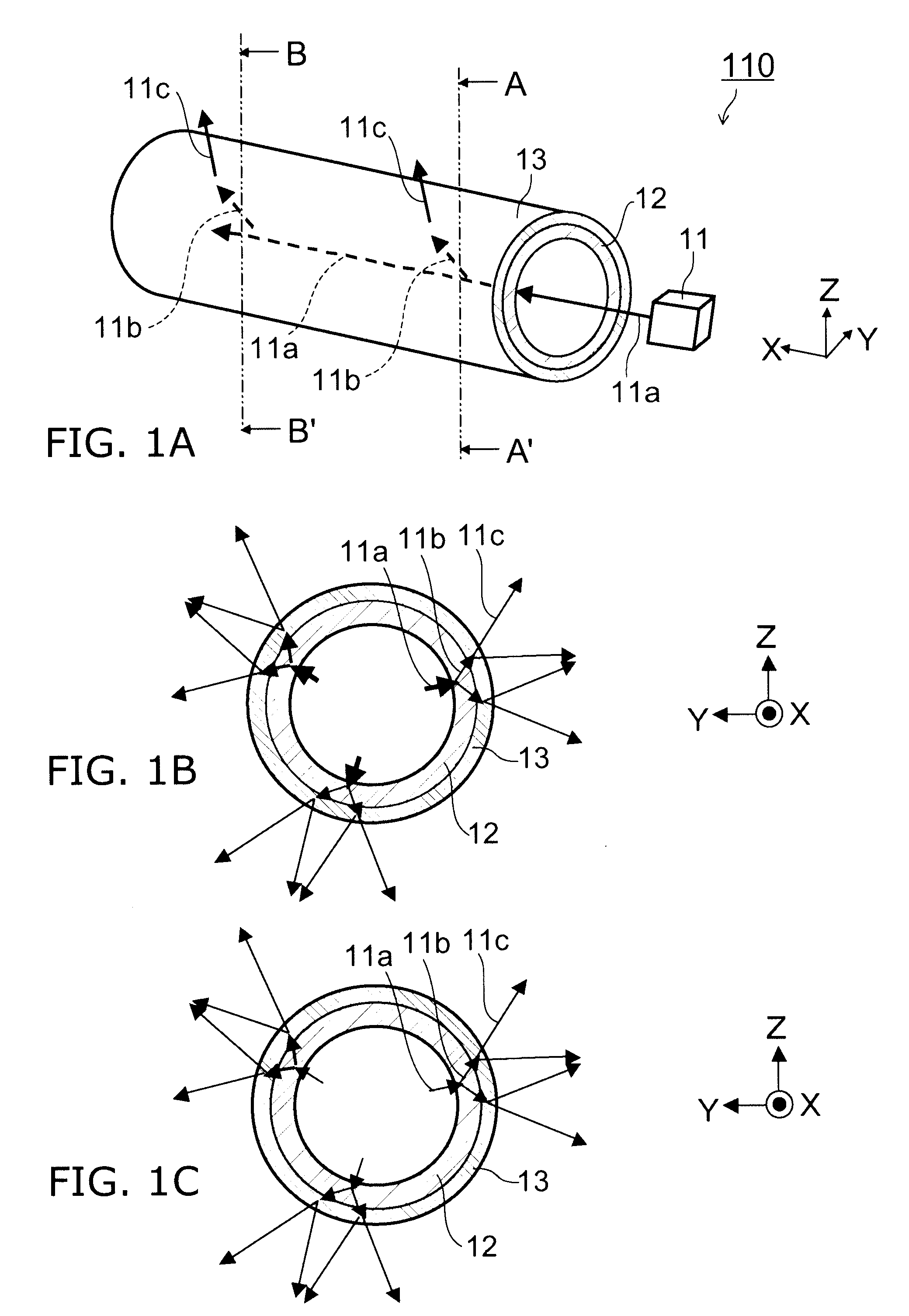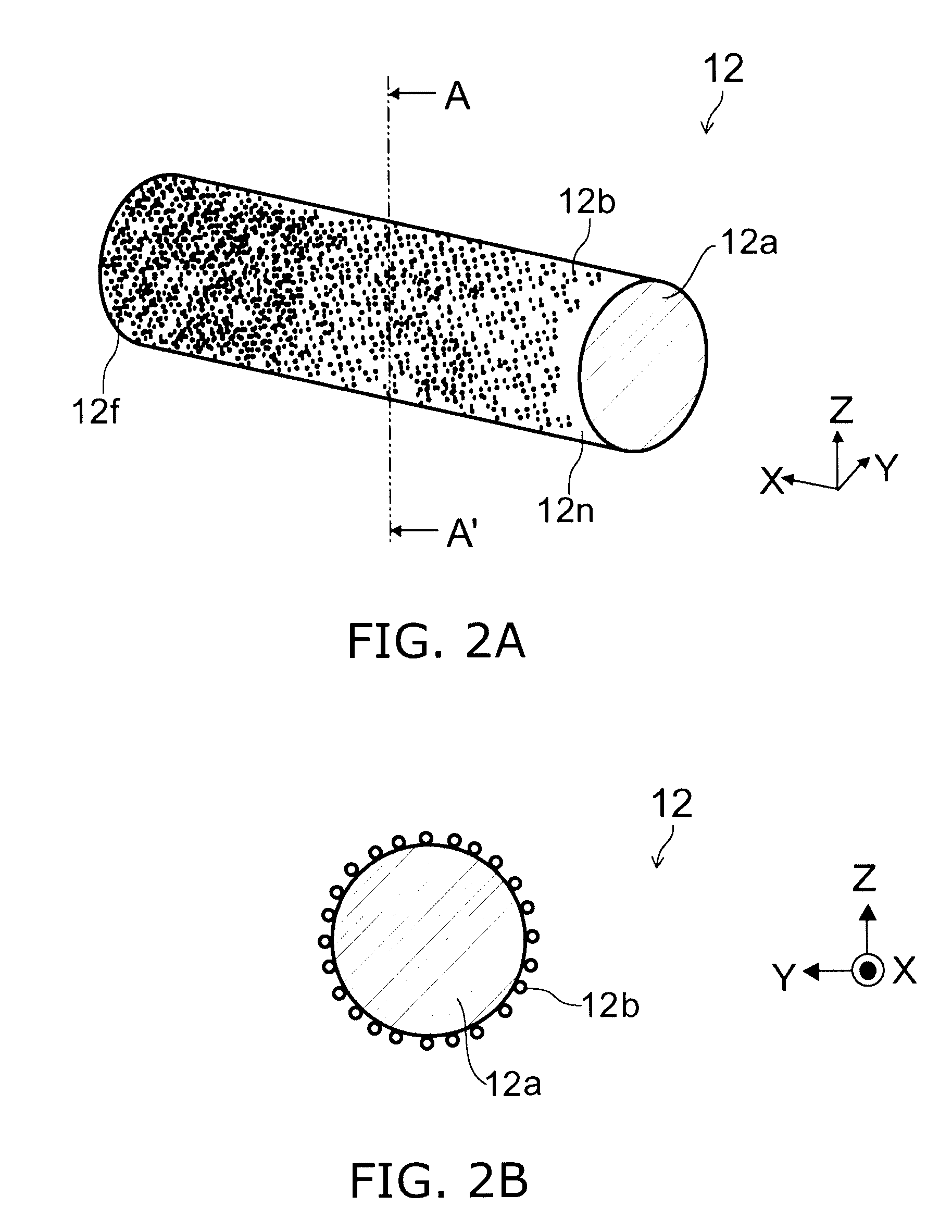Light-emitting device and illuminating device
- Summary
- Abstract
- Description
- Claims
- Application Information
AI Technical Summary
Benefits of technology
Problems solved by technology
Method used
Image
Examples
first embodiment
[0036]FIGS. 1A to 1C are schematic views illustrating the configuration of a light-emitting device according to a first embodiment of the invention.
[0037]That is, FIG. 1A is a schematic perspective view, and FIG. 1B is a cross-sectional view taken along line A-A′ of FIG. 1A, and FIG. 1C is a cross-sectional view taken along line B-B′.
[0038]As shown in FIG. 1A, the light-emitting device 110 according to the first embodiment of the invention includes a first laser light source 11, a first diffusion member 12 provided along a light axis of a first light 11a radiated from the first laser light source 11 and generating from the first light 11a a second light 11b outgoing in different directions from the light axis direction of the first light 11a, and a first wavelength-converter 13 provided along the first diffusion member 12, absorbing the second light 11b and emitting a third light having a different wavelength from the second light 11b.
[0039]And, in the first diffusion member 12, th...
second embodiment
[0107]FIG. 4 is a schematic perspective view illustrating the configuration of a diffusion member used in the light-emitting device according to a second embodiment of the invention.
[0108]FIGS. 5A and 5B are graphs illustrating characteristics of a diffusion member used in the light-emitting device according to the second embodiment of the invention.
[0109]That is, the vertical axis of FIGS. 5A and 5B represents density C of the diffusion bodies 12b. And, the horizontal axis of the FIG. 5A represents distance x in the X axis direction, and the horizontal axis of FIG. 5B represents distance y in the Y axis direction. The horizontal axis of FIG. 5B may be distance z in the Z axis direction.
[0110]The light-emitting device 120 according to the second embodiment has characteristics in the first diffusion member 12, and thus, the first diffusion member 12 will be described.
[0111]As shown in FIG. 4, in the light-emitting device 120 according to the second embodiment, the first diffusion mem...
third embodiment
[0119]FIG. 6 is a schematic perspective view illustrating the configuration of a diffusion member used in the light-emitting device according to a third embodiment of the invention.
[0120]FIGS. 7A and 7B are graphic views illustrating characteristics of a diffusion member used in the light-emitting device according to the third embodiment of the invention.
[0121]That is, the horizontal axis of FIGS. 7A and 7B represents distance x in the X axis direction. And, the vertical axis of the FIG. 7A represents particle diameter d of the diffusion bodies 12b, and the vertical axis of FIG. 7B represents difference (absolute value of difference) Δd between the particle diameter d of the diffusion bodies 12b and the wavelength of the first light 11a.
[0122]The light-emitting device 130 according to the third embodiment has characteristics in the first diffusion member 12, and therefore, the first diffusion member 12 will be described.
[0123]As shown in FIG. 6, in the light-emitting device 130 acc...
PUM
 Login to View More
Login to View More Abstract
Description
Claims
Application Information
 Login to View More
Login to View More - R&D
- Intellectual Property
- Life Sciences
- Materials
- Tech Scout
- Unparalleled Data Quality
- Higher Quality Content
- 60% Fewer Hallucinations
Browse by: Latest US Patents, China's latest patents, Technical Efficacy Thesaurus, Application Domain, Technology Topic, Popular Technical Reports.
© 2025 PatSnap. All rights reserved.Legal|Privacy policy|Modern Slavery Act Transparency Statement|Sitemap|About US| Contact US: help@patsnap.com



